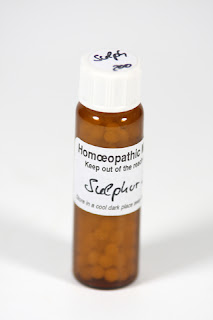In
homeopathic treatment, the selection of the appropriate drug is of prime
importance. The choice of the dose and potency is equally significant
for successful treatment. The 'dose' refers to the amount of
globules/tablets or the quantity of drops. It should correspond to the
'Laws of Stimulant Therapy’, which says that greater the irritant effect
is, the smaller should be the dose; the more inert the substance is,
the greater should be the dose.
When
it comes to potency selection of homeopathic medicines, there has
always been a great debate between two camps: the low and high potency
prescribers. Though both the parties can demonstrate success, a general
guideline that’s followed advises high potencies for chronic illnesses
and low potencies for acute conditions. There could be exceptions to
this guideline though, depending on the symptoms and the severity of an
ailment.
Choosing potency and doses made simple
When
self-treating with homeopathy medicine, lay people usually use the
decimal potencies. This includes 6X homeopathic medicines as well as
those from the centesimal scale, such as 6C, 12C, or 30C. When using
such medicines of lower potency, you would need to re-administer them
more frequently.
In
the centesimal preparation of homeopathic medicines, 1 part of the
original substance is combined with 99 parts of alcohol or water to
create a “1C” medicine. This process is repeated numerous times. Every
time the medicine is diluted and shaken, it becomes stronger, not
weaker. Dilutions of different strengths are inoculated onto sugar
tablets. Professional homeopaths often use these potencies from the
centesimal scale.
Potencies
of 30C or lower belong to the category of low potency remedies. Those
of 200C or higher are considered high potency medicines. When
prescribing the C potencies, professional homeopaths usually use 30C (30
dilutions), 200C (diluted 200 times), 1M (1000 dilutions), and 10M
(diluted 10,000 times).
There’s
a third scale of homeopathic medicines, called LM (or Q) potencies. An
LM1 potency is diluted to a factor of 1 to 50,000, rather than 1 to 10
or 1 to 100. While you will get the C and X potencies mostly in the form
of medicated sugar pellets, homeopathic pharmacies prepare the LM
medicines in liquid form, which are then diluted and administered to the
patients frequently, often daily.
Self-treatment vs. professional advice
From
common cold and cough to body aches and pains, you can use low potency
doses of homeopathic medicines for self-treatment of a variety of
ailments. When you are unsure about which remedy to take, you should
start with a 6X. In case symptoms improve, but full relief isn’t
achieved, you may take the same remedy in a higher potency (such as
30C). However, if no improvement or relief is felt, you should ideally
consider a different remedy in a low potency. You can take lower
potencies every few hours for a few days.
For
acute conditions, high potencies, such as 200C or 1M in very low doses
(typically once per week) is advisable. Such potencies will act quickly
and powerfully and offer speedy relief, thus making repetition of the
medicine unnecessary. However, you need to be sure that the chosen
medicine is the right one. Therefore, it’s advisable to consult an
experienced homeopathic doctor, and stick to their advice when it comes
to taking such high potency doses for chronic or serious ailments.

Comments
Post a Comment